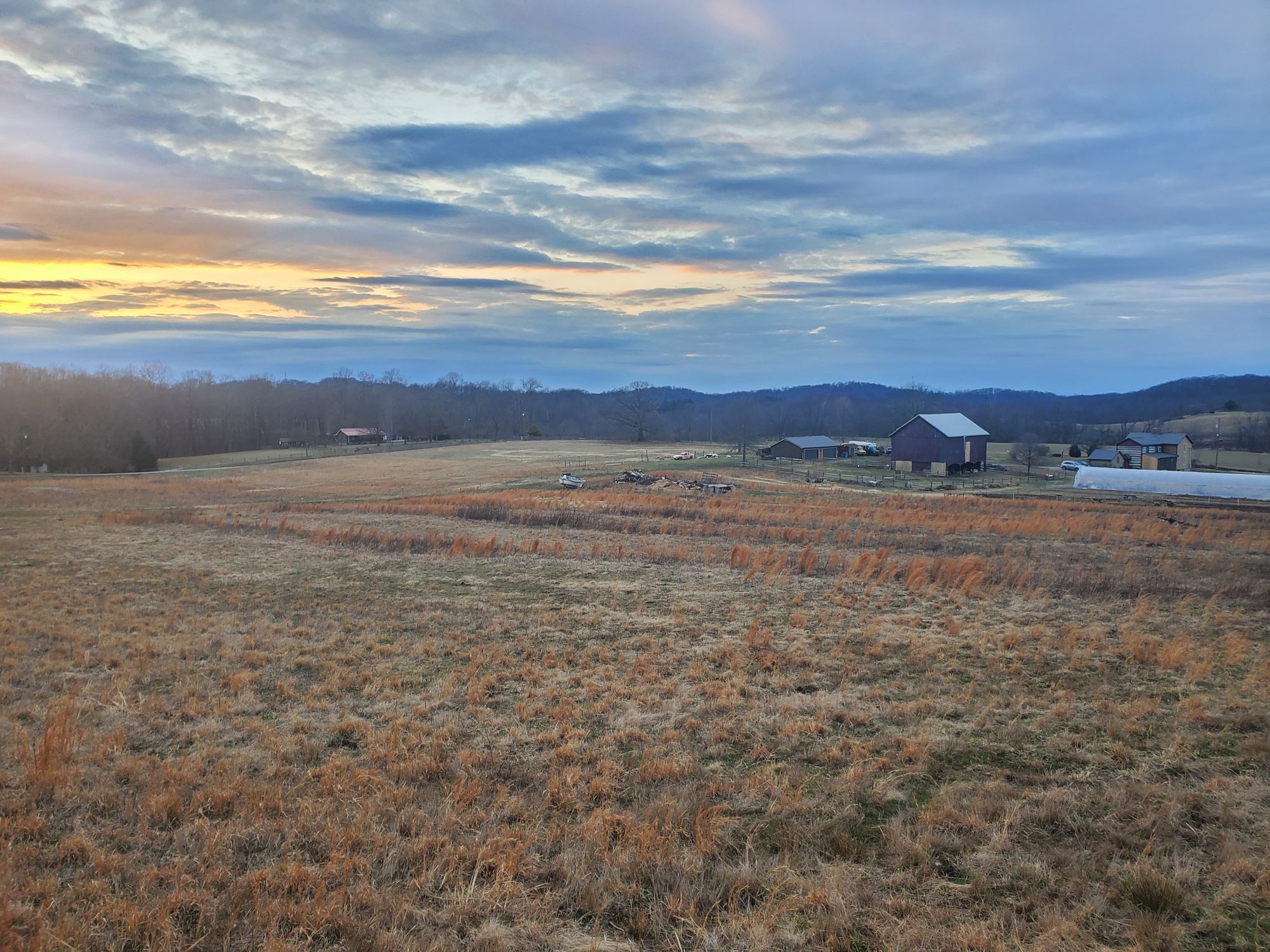Ultra-low budget silvopasture planting update.

Good evening!
I'd like start by welcoming the new readers we have joining us.
If you are new here, there's a couple things you should know.
First, we have a small farm in Western PA where we're experimenting with building a profitable farm based on perennials, among other things.
Our vision of a better future is centered on achieving wellbeing while integrating with nature. We do not agree with the dominant conservation narrative that positions humans as something that must be removed from nature.
We support human wellbeing. We support small farmers. We support wild life. We support biodiversity. We do not believe these are inherently opposed.
I encourage you to read some of my earliest articles about how we view rewilding, which I will link at the end of this post.
Second, I started writing in December after reading a book called the War of Art. It inspired me to start writing and sharing something every day in order to build this community. I committed to at least 90 days of this.
That means if you are on this list, you will get an email from me every day through at least the end of February.
If you do not want a daily email, you can unsubscribe at any time. If you choose to devote your attention here, I will do my best to make it worth your time.
So now let's dive into what I want to talk about today...
We just took a walk and surveyed the tree rows we planted last spring.
Nearly every tree we planted is out there and doing well.
The thing that is remarkable about this is that they have no protection. No fencing, no tree tubes, nothing.
This planting was an experiment in ultra-low budget silvopasture planting.
We went the ultra-low budget road for a couple reasons. First, this was completely self funded. Second, there was a lot of risk since this was our first tree planting project. I had to be ready to lose everything invested if the trees didn't take or our landlords don't like the outcome.
After carefully designing the layout, we planted persimmons, honey locust, and mulberries in 6 rows spaced about 40 feet apart in a section of our pasture. Within the rows, the trees were planted between 12 and 25' apart (we did a couple different layouts within the rows).

Each tree was mulched with free wood chips we collected from local tree companies.
We mulched for two reasons.
The first was to reduce competition while the trees were getting their roots established. I should note that we planted small, bare root trees in this project. Most of the trees only had 6-18" above the ground after planting.
The second reason we mulched was to help retain moisture. We have no irrigation, so our ability to water was limited to carrying buckets to the trees. We did this a couple of times early on in order to help them get established, but provided no water through the summer.
We grazed the pasture between the rows several times with sheep and cows since the planting. The animals were excluded from the trees with temporary fencing. I kept the fencing about 1.5-2' away from the trees on each side, so each tree row is about 3-4' wide total.
I made the rows wider than they need to be because I plan to add in more plants to the rows. More on that later.
We did no plant suppression within the rows other than the mulch that we put down immedietely around the trees. In the picture below, you can make out where the rows are based on where you can see broomsedge.

There are also blackberry bushes and golden rod stems growing in there.
This brings me to my next point. We are not currently providing deer protection. We have not lost any trees to deer despite the fact that these trees were planted in an active deer lane through our property.
Our primary means of deer detterent has been our dogs. We have three dogs, one of which is a Great Pyrenees. She is a big fan of chasing deer to the property line.
I had the dogs run the deer off a few times after planting, and it wasn't long before they shifted their behavior and stopped using that lane.
I think the fact that I let other plants grow up in the lane also helps to shield them from damage from animals as well, though I have no proof to back that up.
One more thing - no rodent damage to stems. Rodent damage is a common problem with tubes because they'll go in for the warmth in winter.
After planting about 150 trees, there were less than 10 missing. I counted 7 spots that were either missing trees completed or were reduced to just a stub.
Most of those were from an unfortunate run in with a brush hog. Oops!
All in all, that's a pretty good result for our first planting.
In the year since then, we've spent a lot of time learning about good silvopsature design and installation, including participating in Austin Unruh's first SilvoPro training back in November.
We're planting a couple thousand trees this spring, which will include going back through our first planting and adding some more trees there.
I'll be sharing more about our designs and the process we're following in the near future.
The main reason I'm sharing all this is to encourage anyone thinking about planting trees to just get out there and do it. The best way to get started is to dig a hole and plant your first tree.
Thanks for reading!
Life is good.
Some articles I like:
